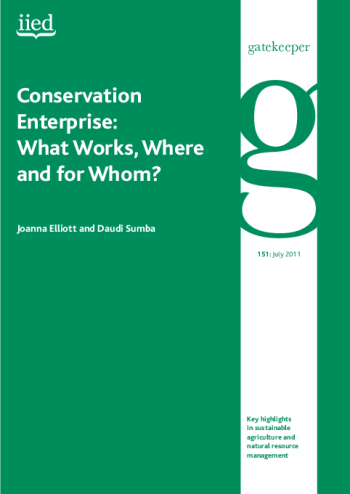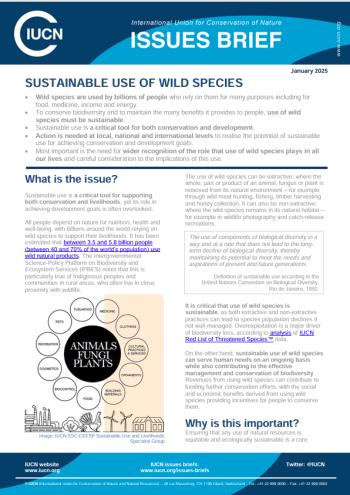
Conservation Enterprise: What Works, Where and for Whom?
Community-based natural resource management (CBNRM) recognises that local communities are often best placed to conserve natural resources, as long as they stand to gain more than they lose from doing so. This study draws on the experience of the AWF and other organisations to assess what effect conservation enterprises can have on the livelihoods of local communities and how effective such initiatives are at poverty reduction.
Elliott, J. and Sumba, D. (2012). Conservation Enterprise: What Works, Where and for Whom?. In Biodiversity Conservation and Poverty Alleviation: Exploring the Evidence for a Link (eds W. Cooper, D. Roe, J. Elliott, C. Sandbrook and M. Walpole). doi:10.1002/9781118428351.ch13
-
Daudi Sumba
-
Joanna Elliott
We support the free flow of information. Please share:
Form coming soon
Related Content
-

-

Review of African Social and Economic Development Volume 1
ByIbrahim Bàbátúndé Anobaarrow_forward2024 -

Economic Analysis: Climate Change and Wildlife Utilization on Private Land
ByJackson OtienoEdwin Muchapondwaarrow_forward2015
Get updates by email
Through impactful research, stakeholder engagement, and professional development, AWEI is supporting the wildlife economy across Africa. Please subscribe for occasional updates on our work and forthcoming events.
Sign up for a quarterly dose of AWEI insights
In a complex and changing world, AWEI generates strategic ideas, conducts independent analysis on wildlife economies, and collaborates with global scholar-practitioners to provide training and expertise for biodiversity conservation, climate resilience, and inclusive economic opportunities in Africa.
